
Anterolisthesis exercises are tailored to improve spinal stability, reduce discomfort, and enhance mobility. These exercises focus on strengthening core muscles, promoting proper posture, and avoiding high-impact activities. Regular practice, combined with professional guidance, can significantly alleviate symptoms and support long-term spinal health.
Definition and Overview of Anterolisthesis
Anterolisthesis is a spinal condition where a vertebra slips forward relative to the vertebra below it. This forward displacement can occur due to degeneration, trauma, or congenital factors. It is a form of spondylolisthesis, specifically referring to the anterior (forward) slippage of the vertebra. The condition can range from mild to severe and may cause pain, stiffness, or neurological symptoms depending on the degree of slippage and nerve compression. Understanding this condition is essential for developing appropriate exercise routines to stabilize the spine and alleviate discomfort.
Importance of Exercise in Managing Anterolisthesis
Importance of Exercise in Managing Anterolisthesis
Exercise plays a crucial role in managing anterolisthesis by strengthening the muscles that support the spine, improving posture, and enhancing overall stability. Regular physical activity helps prevent further vertebral slippage, reduces pain, and promotes long-term spinal health. Low-impact exercises, such as swimming and pelvic tilts, are particularly beneficial as they minimize strain on the spine while improving mobility. A well-structured exercise routine, tailored to individual needs, can significantly enhance quality of life and reduce the risk of complications. Professional guidance from a physical therapist is essential to ensure exercises are performed safely and effectively.
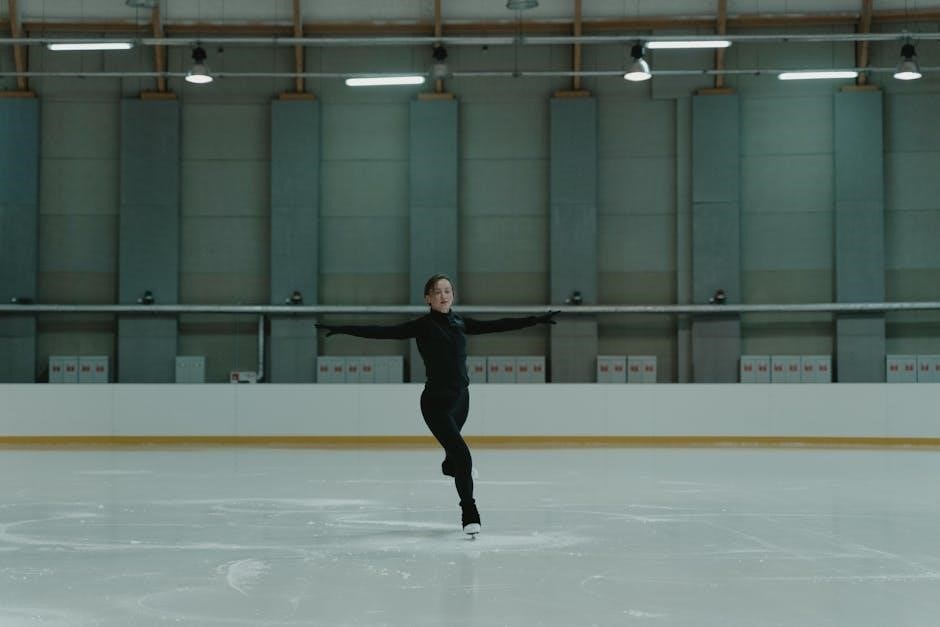
Understanding Anterolisthesis
Anterolisthesis refers to a spinal condition where a vertebra slips forward, disrupting normal spinal alignment. It can result from aging, trauma, or strenuous activities, affecting spinal stability and posture.
Causes and Risk Factors of Anterolisthesis
Anterolisthesis occurs when a vertebra slips forward due to weakened spinal structures. Common causes include aging, osteoarthritis, osteoporosis, and fractures. Trauma or repetitive stress from activities like heavy lifting or bodybuilding can also contribute. Degenerative conditions, such as spondylolysis, often predispose individuals to this spinal misalignment. Risk factors include poor posture, obesity, and a sedentary lifestyle, which strain the spine. Genetics may also play a role in some cases. Understanding these causes helps tailor exercises and treatments to address the root of the condition and prevent further spinal instability.
Symptoms and Diagnosis of Anterolisthesis
Anterolisthesis often presents with lower back pain, muscle spasms, and tightness. Symptoms may include radiating pain, numbness, or tingling if nerves are compressed. Diagnosis typically involves imaging tests like X-rays, MRIs, or CT scans to visualize the spinal misalignment. A physical exam may reveal limited mobility or tenderness. In some cases, a neurological exam is conducted to assess nerve function. The severity of the slippage is graded using the Meyerding scale, ranging from mild to severe. Early detection and proper diagnosis are crucial for effective management and treatment planning.
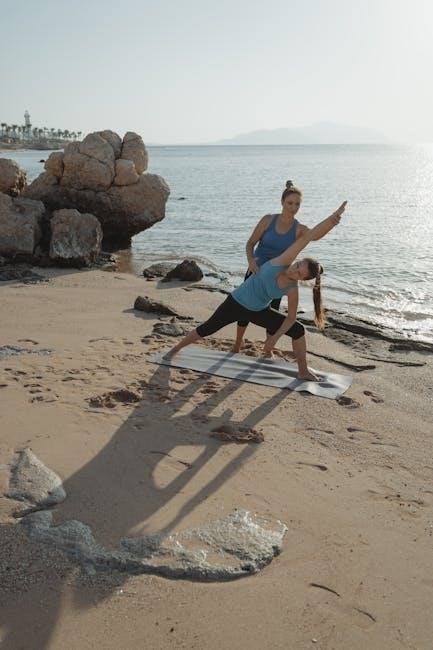
Core Strengthening Exercises
Core strengthening exercises are essential for stabilizing the spine and improving posture. They target abdominal and back muscles, enhancing overall spinal support and reducing slippage risk.
Abdominal Bracing Techniques
Abdominal bracing involves activating core muscles to stabilize the spine. Lie on your back, engage your transverse abdominis by drawing your belly button toward your spine. Hold for 5-10 breaths, gradually increasing duration. This technique strengthens deep abdominal muscles, improving spinal stability and reducing anterolisthesis progression. Practice in various positions: supine, prone, kneeling, and standing. Consistency enhances core strength, providing better support for the lower back and promoting neutral spine alignment during daily activities.
Pelvic Tilt Exercises for Spinal Stability
Pelvic tilt exercises are essential for improving spinal stability in anterolisthesis. Lie on your back with knees bent and feet flat on the floor. Gently tilt your pelvis upward, flattening your lower back against the ground. Hold for 5 seconds, then release. Repeat for 10-15 repetitions. This exercise strengthens the muscles supporting the lumbar spine, enhancing stability and reducing slippage. Perform with slow, controlled movements, focusing on proper form to maximize benefits and minimize strain. Regular practice helps maintain a neutral spine alignment and alleviates discomfort associated with anterolisthesis.
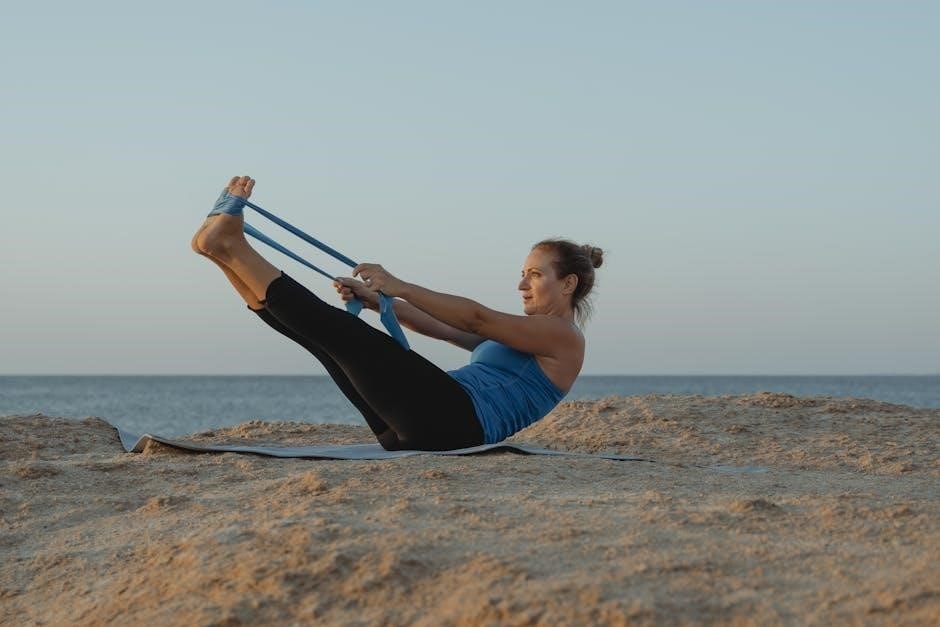
Low-Impact Cardiovascular Exercises
Low-impact cardiovascular exercises, such as walking and swimming, promote circulation and mobility while minimizing spinal strain. These activities are ideal for maintaining heart health without exacerbating anterolisthesis symptoms.
Walking and Water Aerobics for Spinal Health
Walking and water aerobics are excellent low-impact exercises for spinal health, particularly for individuals with anterolisthesis. Walking promotes circulation and mobility without straining the spine, while water aerobics provides resistance training in a buoyant environment, reducing stress on the vertebrae. Both activities strengthen muscles, improve flexibility, and enhance cardiovascular fitness. They are ideal for maintaining spinal stability and reducing discomfort. Starting with short sessions and gradually increasing duration is recommended. Consulting a healthcare provider to tailor these exercises to individual needs ensures safety and effectiveness in managing anterolisthesis symptoms.
Benefits of Swimming for Anterolisthesis
Swimming is an excellent low-impact exercise for anterolisthesis, offering numerous benefits for spinal health. The buoyancy of water reduces stress on the spine, allowing for gentle, pain-free movement. It strengthens muscles without putting excessive strain on the vertebrae, improving overall flexibility and stability. Swimming also enhances cardiovascular fitness and promotes relaxation, which can help alleviate discomfort associated with anterolisthesis. Its low-impact nature makes it an ideal activity for maintaining spinal health while minimizing the risk of further injury. Regular swimming can complement core strengthening and stretching exercises, supporting long-term management of the condition.
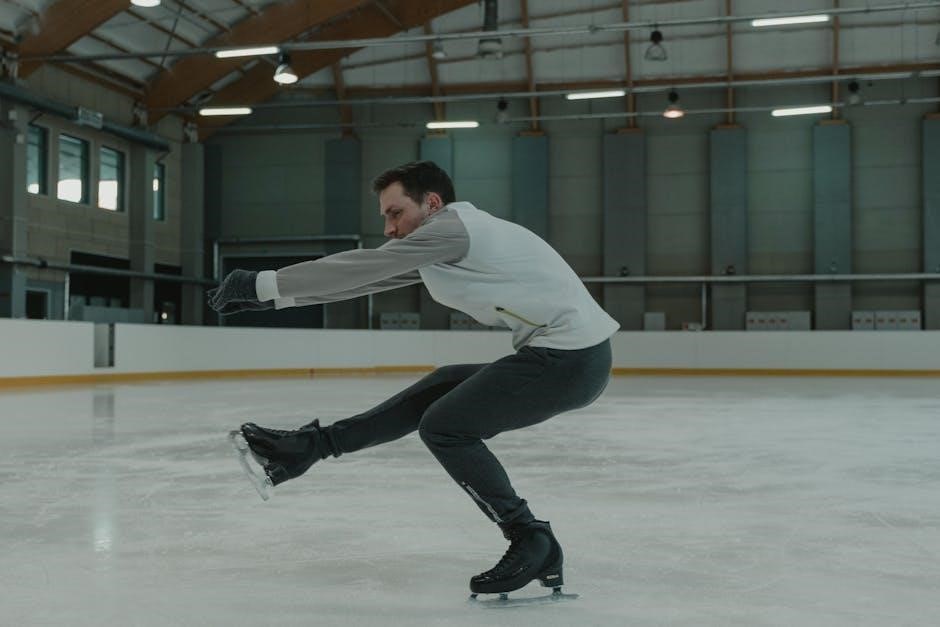
Stretching Exercises for Anterolisthesis
Stretching exercises for anterolisthesis focus on reducing muscle tension and improving flexibility. Key stretches include hamstrings, gastrocnemius, and latissimus dorsi, promoting spinal alignment and mobility effectively.
Hamstring and Gastrocnemius Stretches
Hamstring and gastrocnemius stretches are essential for reducing muscle tension in the posterior chain, which can contribute to spinal misalignment. These stretches improve flexibility and promote proper spinal stability. The seated hamstring stretch, standing calf stretch, and supine 90-90 knee extension are effective exercises. They target tight muscles that pull on the lower back, alleviating strain. Regular practice helps maintain neutral spine alignment and prevents further slippage. Always perform these stretches gently and within a pain-free range to avoid injury. Consulting a healthcare professional ensures proper technique and safety.
Latissimus Dorsi and Hip Flexor Stretches
Latissimus dorsi and hip flexor stretches are crucial for addressing muscle imbalances that contribute to spinal instability. The child’s pose stretch targets the latissimus dorsi, relieving upper back tension. Hip flexor stretches, such as the kneeling hip flexor stretch, reduce tightness in the front of the hips, which can pull the pelvis out of alignment. These exercises promote better posture and reduce strain on the lower spine. Regular stretching improves flexibility and supports the stability of the spine, helping to manage anterolisthesis effectively. Always perform these stretches gently and within a pain-free range for optimal benefits.
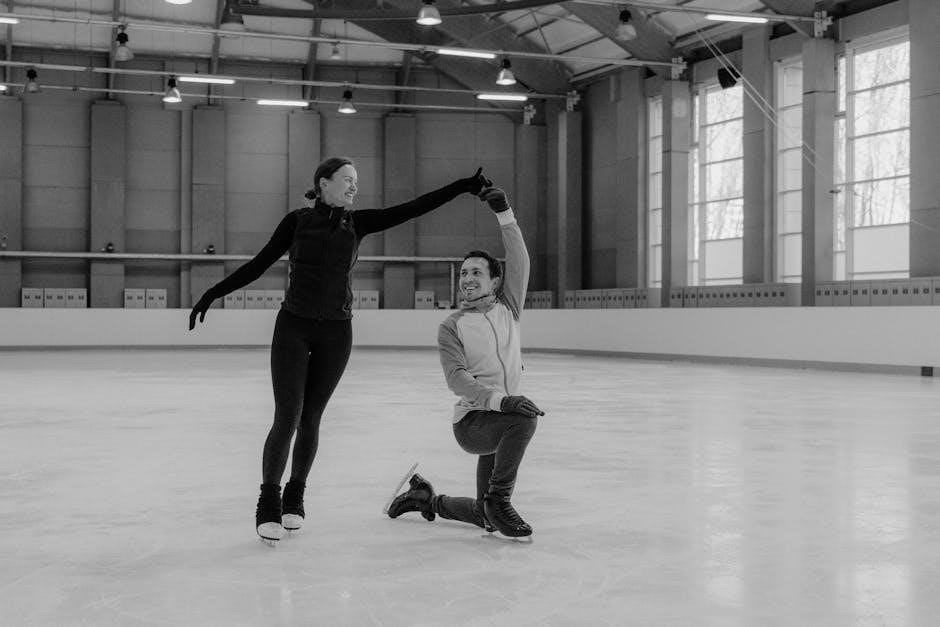
Strengthening Exercises for the Lower Back
Strengthening exercises for the lower back focus on enhancing spinal stability and reducing slippage. Superman and Bird-Dog exercises are effective for building endurance and improving posture alignment, crucial for managing anterolisthesis.
Superman and Bird-Dog Exercises
Superman and Bird-Dog exercises are essential for strengthening the lower back and improving spinal stability. The Superman exercise involves lying prone and lifting the arms and legs, engaging the erector spinae muscles. Bird-Dog exercises strengthen the core and improve balance by extending one arm and the opposite leg simultaneously. Both exercises promote proper spinal alignment, reduce muscle imbalances, and enhance endurance. Regular practice helps stabilize the spine, preventing further slippage and alleviating discomfort associated with anterolisthesis. These exercises are low-impact, making them suitable for individuals with spinal conditions, and should be performed with controlled movements to maximize benefits.
Bridge Exercise for Gluteal and Core Strength
The bridge exercise is a highly effective movement for strengthening the gluteal muscles and core, which are crucial for spinal stability. By lying on your back and lifting your hips while squeezing your glutes, this exercise targets the muscles that support the lower spine. It helps improve posture, reduce strain on the spine, and enhance overall stability. The bridge exercise is low-impact, making it ideal for individuals with anterolisthesis. Performing it with controlled movements ensures maximum engagement of the target muscles, promoting strength and stability without risking further injury or discomfort.
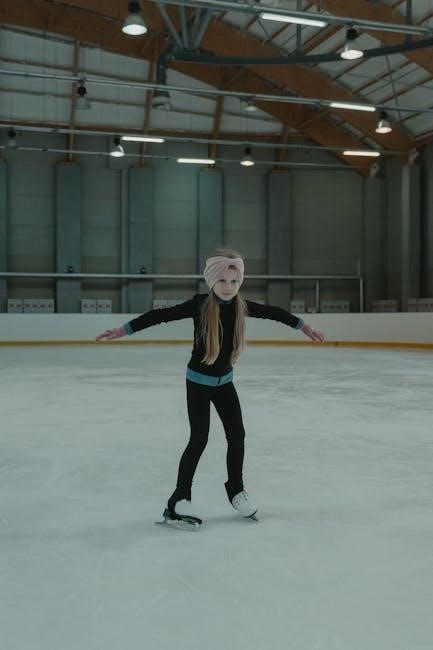
Body Awareness and Posture
Body awareness and proper posture are essential for managing anterolisthesis; Maintaining neutral spine alignment reduces spinal stress and promotes stability, while postural modifications prevent further strain.
Neutral Spine Alignment in Daily Activities
Maintaining neutral spine alignment is crucial for reducing stress on the vertebrae. This involves keeping the natural curves of the spine intact during sitting, standing, and lifting. In sitting, ensure hips and knees are at 90 degrees, with feet flat on the floor. While standing, distribute weight evenly on both feet and avoid arching the lower back. When lifting, bend at the knees and hinge at the hips to engage core muscles. Consistently practicing neutral spine alignment in daily activities helps prevent further slippage and supports overall spinal stability and health.
Postural Modifications to Reduce Spinal Stress
Postural modifications are essential to minimize spinal stress in anterolisthesis. Maintain awareness of your posture during daily activities, avoiding slouching or excessive arching. Use ergonomic furniture to support your spine while sitting or working. When lifting objects, keep them close to your body and lift with your legs, not your back. Avoid prolonged standing or bending, and consider using a supportive belt for added stability. Sleeping on a firm mattress with a pillow under the knees can also reduce strain. These adjustments help alleviate pressure on the affected vertebrae and promote healing.

Exercises to Avoid
Avoid high-impact activities like running, jumping, or heavy weightlifting, as they can strain the spine and worsen anterolisthesis. Twisting movements and bending should also be minimized.
High-Impact Activities and Their Risks
High-impact exercises, such as running, jumping, or heavy weightlifting, pose significant risks for individuals with anterolisthesis. These activities can exacerbate spinal instability, leading to increased discomfort and potential vertebral slippage. The repetitive stress from high-impact movements can weaken the spinal structure further, making the condition more challenging to manage. It is crucial to refrain from such activities to prevent aggravating the condition and to focus on low-impact alternatives that promote stability and strength without compromising spinal health.
Weightlifting and Twisting Movements to Avoid
Weightlifting and twisting movements are particularly risky for individuals with anterolisthesis, as they can place excessive strain on the spine. Heavy lifting, especially with improper form, can increase the slippage of the vertebrae, while twisting motions may disrupt spinal alignment and stability. These actions can lead to heightened pain and discomfort, potentially worsening the condition. Avoiding such movements is essential to protect the spine and prevent further injury. Instead, focus on controlled, low-impact exercises that strengthen the core and promote spinal stability without risking additional damage.

Physical Therapy and Rehabilitation
Physical therapy plays a crucial role in managing anterolisthesis by improving spinal stability and reducing pain. Tailored exercises and interventions help restore function and prevent progression of the condition.
Role of Physical Therapy in Managing Anterolisthesis
Physical therapy is essential for managing anterolisthesis, focusing on stabilizing the spine and improving mobility. It includes exercises like pelvic tilts, core strengthening, and stretching to reduce pain and enhance function. Therapy programs are tailored to address specific symptoms, promoting spinal alignment and muscle balance. By avoiding high-impact activities and incorporating low-impact exercises, individuals can alleviate discomfort and prevent progression. Professional guidance ensures a safe and effective approach to rehabilitation, helping patients regain strength and confidence in daily activities.
Progressive Rehabilitation Programs for Recovery
Progressive rehabilitation programs for anterolisthesis focus on gradual, structured phases to enhance spinal stability and strength. These programs begin with gentle exercises like pelvic tilts and abdominal bracing to build a strong foundation. As progress is made, more dynamic movements and resistance exercises are introduced to improve mobility and reduce discomfort. The goal is to restore functional movement while minimizing strain on the spine. Regular monitoring ensures exercises are modified to suit individual needs, promoting a safe and effective recovery process tailored to each patient’s condition and progress.
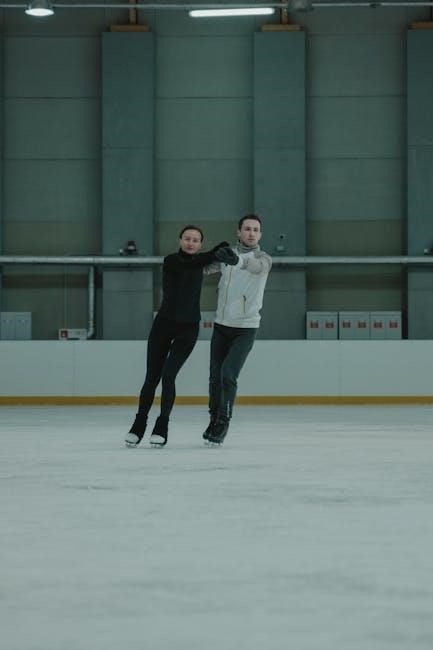
Exercise Frequency and Duration
Exercises for anterolisthesis should be performed 3-4 times weekly, with sessions lasting 20-30 minutes. Consistency is key to achieving optimal spinal stability and symptom relief.
Recommended Exercise Routine for Anterolisthesis
A well-structured routine for anterolisthesis includes core strengthening, low-impact cardio, and stretching. Begin with 20-30 minutes per session, 3-4 times a week; Start with gentle exercises like pelvic tilts and abdominal bracing to build stability. Incorporate low-impact activities such as swimming or walking to enhance cardiovascular health without straining the spine. Stretching exercises, like hamstring and latissimus dorsi stretches, should follow to improve flexibility. Gradually increase intensity but avoid high-impact movements. Consistency and proper form are crucial for optimal results and spinal protection.
Gradual Progression of Exercise Intensity
Exercises for anterolisthesis should progress gradually to avoid overloading the spine. Start with low-intensity movements like pelvic tilts and abdominal bracing, ensuring proper form. As strength and stability improve, introduce resistance or duration in core and stretching exercises. Avoid sudden increases in intensity to prevent setbacks. Monitor progress weekly and adjust routines based on comfort and spinal response. Always consult a healthcare provider before advancing to more challenging exercises, ensuring a safe and effective progression tailored to individual needs and spinal health.
Monitoring Progress and Safety
Regularly track symptoms, exercise tolerance, and spinal alignment. Avoid high-impact activities and report any pain increase to your healthcare provider. Adjust routines as needed for safety and effectiveness.
Importance of Regular Monitoring
Regular monitoring is crucial for assessing progress and ensuring exercises are performed safely. Tracking symptoms, strength improvements, and spinal alignment helps prevent worsening conditions. It allows for timely adjustments to routines, avoiding overexertion. Monitoring also ensures adherence to recommended exercises, avoiding high-impact activities that could strain the spine. Professional guidance is essential to evaluate progress and modify plans as needed. Consistent oversight helps maintain spinal stability and promotes long-term recovery. Regular check-ups with healthcare providers ensure a tailored approach to managing anterolisthesis effectively.
Safety Considerations During Exercise
Ensuring safety during anterolisthesis exercises is vital to prevent further injury. Avoid high-impact activities that strain the spine, such as heavy weightlifting or twisting motions. Always consult a healthcare provider or physical therapist before starting a new routine. Use proper form and technique to maintain spinal alignment. Begin with low-intensity exercises and gradually increase intensity. Avoid movements that cause sharp pain or discomfort. Incorporate supportive devices, like exercise balls or blocks, to enhance stability. Prioritize controlled, slow movements to protect the spine and promote healing. Monitoring and adjustments are key to a safe and effective exercise plan.
Exercises for anterolisthesis are a vital component of managing spinal health. By focusing on core strengthening, low-impact cardio, and proper posture, individuals can mitigate symptoms and improve stability. Avoiding high-impact activities and twisting motions is crucial to prevent further injury. Consulting a healthcare professional ensures a personalized and safe approach. Regular practice promotes long-term spinal well-being and enhances overall quality of life. Tailoring exercises to individual needs and-progressing gradually guarantees effective results and supports a healthy, active lifestyle.
Summarizing the Benefits of Exercise for Anterolisthesis
Exercise plays a crucial role in managing anterolisthesis by enhancing spinal stability, reducing pain, and improving mobility. Strengthening core muscles and improving posture helps alleviate pressure on the spine. Low-impact activities like swimming and walking promote circulation without straining the vertebrae. Stretching exercises, such as hamstring and latissimus dorsi stretches, increase flexibility and reduce stiffness. Regular physical therapy can prevent further slippage and enhance overall well-being. Consistency and proper technique are key to maximizing the benefits of these exercises, ensuring long-term spinal health and functionality.
Final Thoughts on Managing Anterolisthesis Through Exercise
Effectively managing anterolisthesis requires a comprehensive approach that incorporates targeted exercises, lifestyle modifications, and professional guidance. By focusing on core strengthening, low-impact cardio, and mindful stretching, individuals can significantly improve spinal stability and reduce discomfort. Avoiding high-impact activities and maintaining proper posture are essential to prevent further progression. Regular monitoring and gradual progression of exercises ensure safety and effectiveness. With consistency and adherence to a well-structured program, individuals can achieve long-term spinal health and enhanced quality of life, minimizing the need for invasive treatments.